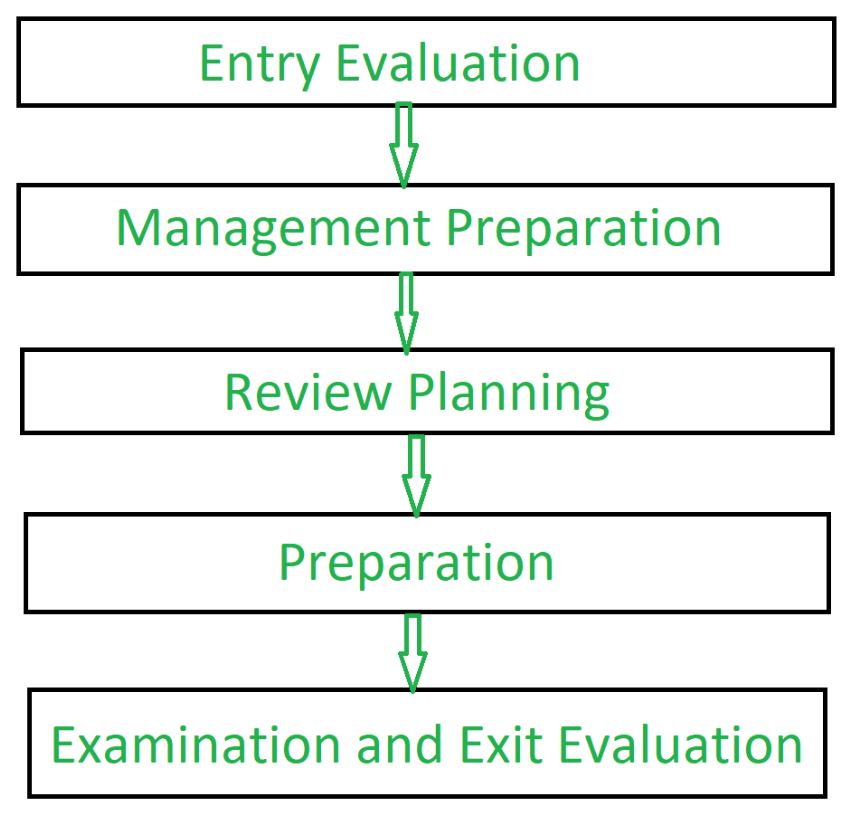Software Review is, as its name implies, a process in which people of different involvements in a project examine the software to see if it meets the necessary requirements of approval. Software review is also part of the life cycle of software development! So it is important for the project to pass through this phase in order to become stronger.
The reviews are actually done by multiple people each of them checking different things for different purposes, each of them checking different aspects of the product. We have project personnel, managers, users, customers, representatives and more giving feedback and giving signs of approval for the project.

Knowing about this topic will increase efficiency in the process of testing and validating the software’s functionality and behavior and It will improve productivity since potential errors are being detected early.
Types of reviews
Software review can be divided into three main types:
Software peer reviews
It is conducted by the creators of the software in order to evaluate the technical content and quality of the work. Checking quality of the software and finding potential errors and defects are the two main actions that take place in this type of review. Peer reviews actually have some subtypes that serve different purposes!
Code review: This is as simple as it gets, it’s a systematic examination of the computer source code.
Pair programming: In this type of peer review, two or more persons develop code together at the same workstation, and then they will review each other’s code.
Inspection: It is a form of formal peer review in which the person follows a well-defined process to find defects in the code.
Walkthrough: In this type, the creators of the software will lead other members of the team to go through the product; the ones viewing the product will act questions and make comments regarding defects that they may find.
Technical Review: It is a form of review in which qualified personnel other than the creators review the software product and see if they find defects regarding usability and problems with specifications and standards.
Software management reviews
They are conducted by a management team directly responsible for the project in order to evaluate the status of the product (how much has been done, what is NOT done yet) and will then direct a course of action depending on the project’s status and schedule. This type of review can be conducted by stakeholders.
If you are doing this type of review, remember to:
- Check consistency with deviations from plans.
- Check the adequacy of the management procedure.
- Access Project Risks.
- Evaluate the impact of actions and ways to measure those impacts.
- Produce a list of action items and issues to be resolved and decisions made.
- The retrospective is important.
Software audit reviews:
They are conducted by external people in order to evaluate if the project can achieve its imposed set of criteria, that being in terms of standards, specifications and agreements. The results of this review include observations, recommendations, corrective actions and a pass or fail assessment.
Software review steps

- Entry evaluation: The Review Leader uses a standard checklist of entry criteria to ensure that optimum conditions exist for a successful review.
- Management preparation: Responsible management ensure that the review will be appropriately resourced with staff, time, materials, and tools, and will be conducted according to policies, standards, or other relevant criteria.
- Planning the review: The Review Leader identifies or confirms the objectives of the review, organises a team of Reviewers, and ensures that the team is equipped with all necessary resources for conducting the review.
- Preparation: The Reviewers individually prepare for group examination of the work under review, by examining it carefully for potential defects, the nature of which will vary with the type of review and its goals.
- Examination: The Reviewers meet at a planned time to pool the results of their preparation activity and arrive at a consensus regarding the status of the document (or activity) being reviewed.
- Exit evaluation: The Review Leader verifies that all activities necessary for successful review have been accomplished, and that all outputs appropriate to the type of review have been finalised.
Reviewing key products
Reviewing the key work products is done through the different types of peer reviews listed above, of course each review checks different products.
Plans: These are checked in all types of peer reviews, checking omissions or inadequacies must be a part of the review process in any of them.
Requirements: There are checked in the walkthrough review only since the requirements are not imposed solely by developers.
Design: This is checked in the walkthrough and inspection review since the design should be following certain guidelines and should be getting feedback by a group of involved people.
Code: This is surely checked in all types of reviews, but it is only truly checked when the walkthrough review is executed since it is checking for standards and specifications.
For more information you can visit here!
